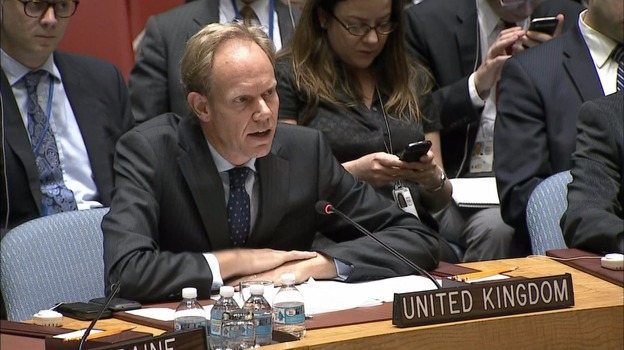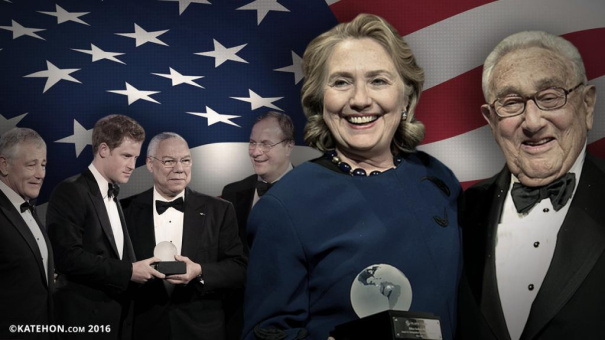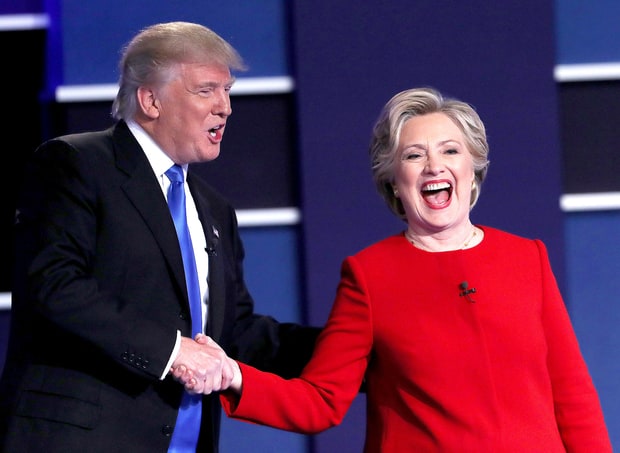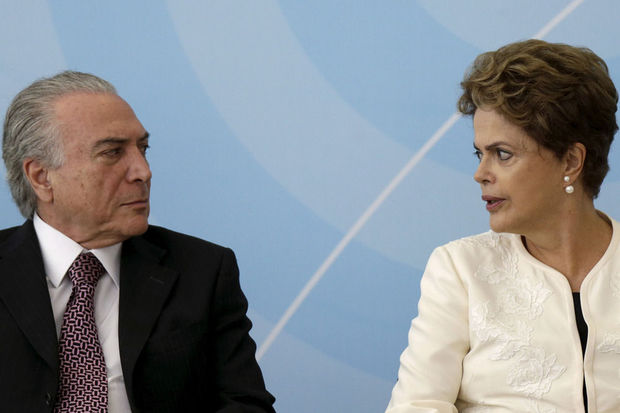The evidence for genetically modified organism (GMOs) safety for human consumption and its environmental risks remains one of the nation’s most contentious, controversial and debated subjects. Throughout the world, governments, national health ministries and their populations have been led to believe that there is no reason to critically object to GMOs. American mainstream media, which have now been fully absorbed into the agendas of large multinational corporate chemical and food sponsors, claim GMOs are completely harmless. We are sold a promise that they are urgently needed for feeding the world. Consequently, in the absence of critical journalism, aside from independent media, the spread of GMOs has become widespread.
Monsanto, Dupont, Syngenta, and Bayer dominate the global GMO market.
Corn is the US’ number one crop with eighty-nine percent being genetically modified. Ninety-three percent of American soybeans are GMO. GM sugar beets, certain squashes, canola, alfalfa, papaya (77% of Hawaii’s crop), and new apple strains are genetically engineered.
Many more GM vegetables and fruits are in the pipeline.
Only during the past 15 years have voices within the environmental and public health movements, and free-thinking scientists and researchers in molecular biology, genetics and agriculture turned vocal to publicly challenge GMO safety and their exaggerated promises. One especially unfounded promise, often promulgated by Monsanto and the US Department of Agriculture (USDA) is the GMO revolution’s ability to feed the world. Yet as a senior economic analyst at the Environmental Working Group in Washington DC has reported, “this is simply a myth adopted and deployed by US agribusiness to distract the public from reality.”[1]
Every leading opponent and critic of GMOs is well known to the chemical industry and its army of public relation provocateurs and internet trolls. Many have been mercilessly attacked, libeled and slandered through a sophisticated network of PR hacks, industry special interest groups, educational and pseudo-scientific organizations and projects, and the mainstream media, publications and lobbying firms. In the wake of the agri-industry’s PR efforts to bolster erroneous favorable images of GMOs and chemical based agriculture, careers have been destroyed. For example, FOX journalists Jane Akre and her husband Steve Wilson were destroyed by Monsanto for providing scientific evidence about the dangers of genetically modified bovine growth hormone in milk.[2] Mainstream media willingly provides a red carpet for GMO advocates to promote the promises of genetic engineering but denies equal time to its scientific critics. So effective have been the chemical industry’s attacks that even peer reviewed research showing GMO risks has been retracted.
Perhaps the most important and damning case of retracted science is that of Eric Gilles Seralini’s studies. Seralini and his colleagues at the University of Caen in France reproduced Monsanto’s own safety trials for GMO maize. However, Seralini continued the study for the entire lifespan of the laboratory animals. Monsanto only published studies conducted over a three month period. Seralini discovered a direct correlation between GM maize consumption with kidney and liver diseases, hormonal disturbance and cancer. Later investigations revealed that a sustained effort by Monsanto lobbyists and the food industry influenced the study’s retraction from the journal Food and Chemical Toxicology. Subsequently, the study was republished by another journal and now remains on the scientific record. Recently, a French court uncovered the original author behind the fraud allegations against Seralini’s research, which led to the retraction. He was identified as Forbes Magazine journalist and former FDA official, Henry I Miller, a former tobacco lobbyist with a history of denying smoking’s association to cancer and heart disease.[3]
Again, on September 22, 2016, a criminal court in Paris found another pro-GMO advocate and former president of the Biomolecular Engineering Commission, which assesses GMO safety in France, guilty of forgery in order to defame and even frame Prof. Seralini of criminal activity.[4]
The entire pseudo-scientism behind corporate sponsored GMO and pesticide trials to twist data results to support Big Ag’s version of safety is an illusion. Even when their own research is proven faulty and corrupt, no explanations are given. Intellectual honesty, courage and integrity are completely absent from not only the large chemical and food companies but from all their supporters in the universities, academies, the scientific blogosphere, and public relations firms and quasi think tanks relied upon for lobbying efforts on behalf of Big Ag.
Today the lesson is clear that money, power and influence sustain the lies and deceit of private industry. Take on any powerful interest and Big Ag will come after you.
Big Ag has turned the clock back to the era of the tobacco industry’s legacy. Decades ago, regardless of how many lawsuits were filed showing tobacco’s causal relationship to cancer, emphysema, heart disease and nicotine addiction, none were won. Years later, and only with the emergence of an executive within the tobacco industry turned whistleblower, Jeffrey Wigand, did the government learn that the heads of the tobacco corporations had lied before Congress. Even the FDA possessed proprietary information from the tobacco industry itself proving smoking’s health risks yet refused to educate the public.
During the past six decades, corporations and their hired lobbyists and PR firms have launched multi-million dollar public campaigns, largely organized and funded in the shadows, to attack critics and activist opponents of DDT, dioxin, saccharine, aspartame, the industrial meat industry, fluoride, psychiatric drugs, hydro-fracking, sugar, vaccines, alcohol, nuclear power, and other toxic substances. Regardless of the health concerns and risks of these chemicals and activities, offensive corporate behavior designed to ridicule, demonize and systematically marginalize opponents is similar and taken from the same playbook. Yet in every case it has been the independent scientific research relied upon by the critics that have been proven correct. Over the decades corporate funded science, the media and the private industries themselves have been proven wrong consistently. The agri-industry’s science is faith based and full of contradictions and unsound claims. Unfortunately government regulators are slow to act on the facts. Dangerous products remain for public consumption for many years before resolute action is taken to ban them. In the meantime, millions of people have been directly harmed or killed by pervasive scientific fraud. Worse, no one in private industry who is caught for perpetuating scientific and medical deception and fraud is held accountable. Corporations settle out of court, pay fines that are a fraction of their revenues, and remain in favor with Wall Street and investors. And those at the federal level are protected and concealed from prosecution altogether.
The history of bad science propagated by private firms has always shown to be profit over health. Inevitably it is self-educated citizens and the victims of corporate greed and profit, not the federal government, who unveil the lies. It wasn’t the federal agencies who raised alarm over DDT’s dangers but a marine biologist, Rachel Carson, acting upon her own convictions, who uncovered the plot in her seminal book Silent Spring. Over the years, many advocates for public safety—Ralph Nader, Jim Turner, Sydney Wolf, Michael Jacobson, Ronnie Cummins, Andrew Wakefield and many others—have battled the righteous struggle to protect consumers against dangerous and unsafe drugs, chemicals and products that the federal government more often than not defends and protects on behalf of corporate interests.
In all such cases, proponents of consumer safety and health have had to struggle against an army of lobbyists, consultants, think tanks, public relations firms and a complicit media with the wealth and influence to convince people that their fears are unfounded and they should wholeheartedly embrace toxic substances. Not unlike the medical establishment, the industrial food industry has created a vast network of allies in all walks of life and within government to promote its cause. Realizing the sheer depth and breadth of this network and the endless money pumped into its public relations machine to keep the myths of GMOs alive and front and center is not only deeply disturbing but also rather impressive. It is a leviathan of enormous scale and influence. And there is little wonder that even with the most damning scientific evidence to discredit anything of long-term value regarding GMOs, virtually nothing is done at the federal level to protect the public.
After reviewing hundreds of research studies and articles, dozens of interviews, and numerous conversations, we are convinced that science overwhelming supports a cautionary position about the safety and promises of GMOs. This research is all in the public domain which begs the questions, why is the federal government reluctant to take action? And why is the chemical agricultural and Big Food industry in complete denial to accept the risks of its products, many which are known carcinogens?
For example, last year, we were made aware of a mother lode of formerly sealed Monsanto documents the EPA was forced to release through a Freedom of Information Act (FOIA) request only after considerable political pressure was applied. The documents, over 10,000 pages worth, provide clear and unequivocal proof that Monsanto has known for many years the serious carcinogenic risks and environmental dangers associated with glyphosate (Roundup) before any GMO seed ever reached the market. Today, approximately 80% of all products with corn and soy on grocery shelves are laced with glyphosate. Monsanto, similar to the tobacco industry, concealed and covered up the health risks about their flagship product for several decades. And even more egregious, the federal EPA has known this for years and still sat on the damning documents.
Our thorough summary about the release of these Monsanto documents was published in The Ecologist. However mainstream media has completely ignored and denied the public urgency in this treasure trove of data that damns practically everything positive Monsanto and the USDA has ever stated about glyphosate’s safety for animal and human consumption and the environment.[5]
Whatever scientific integrity these people may have once held, it has been compromised in a Faustian deal with private financial interests. GMO science has become a mad science, a form of pathology that hides behind the illusion of being objective.
Instead, independent researchers, their citizen supporters and anti-GMO activists are venomously attacked by every means available. Conveniently anonymous Wikipedia editors are clearly advocates of the health and food industries as any alternative doctor or health practitioner can attest when she or he attempts to change false information on their profiles. And now many otherwise independent liberal, independent media sources, such as Mother Jones and Alternet, are increasingly following suit. It pays to play the game with the powers that have money.
So who are these people behind the efforts to suppress opposition? Who are the real trolls doing agribusiness’ dirty work? When we pull back the curtain, the wizards behind the chemical food industry who control the message through the media through a well-oiled public relations network are exposed.
The Genetic Literacy Project and University of California at Davis
The chemical agricultural industry relies upon American universities in many ways. Collaborations between corporations, such as Monsanto, Syngenta and DuPont, and university agricultural departments are common place and this has been the increasing trend in the academic community since the 1980s and the emergence of biotechnology. What is more recent has been a new trend whereby universities across the U.S. participate directly or indirectly in the marketing promotion of GMOs. In effect, some universities now act as private industry’s lobbyists. And this becomes a greater scandal when the university is a public institution receiving public funding. Such is the case of the University of California at Davis and its prestigious agriculture department.
To date, US Right to Know has filed seventeen public records requests, per the California Public Records Act, to receive information about the funding of questionable activities that go beyond serving public education and only benefit private interests such as Monsanto.[6]
Among these lobbying groups operating on the UC campus is the Genetic Literacy Project (GLP).[7] Over the years GLP has gained recognition as a credible and reliable source of information about GMOs. It is one of the most frequently quoted sources of information by pro-GMO advocates and journalists. However in our opinion, GLP is perhaps one of the most spurious, financially compromised and scientifically illiterate organizations, founded and funded for the sole purpose of disseminating false pro-GMO propaganda that distorts peer reviewed literature in order to prop up public support for GMOs and genetic engineering in general.[8]
The Project has become the GMO industry’s clearing house for public relations to spin science into advertising, propaganda and character assassination of GM opponents. It is also the primary site now sourcing the review of 1,700-plus studies favoring GMO safety. This review of over 1,700 studies, also known as the Nicolia Review, is the most cited source making the broadest claims for GMO safety. Yet over the years, many independent, industry free and unbiased researchers have reviewed the Nicolia Review and their conclusions are far from what private industry wants us to believe. Many of these studies are tangential at best and barely take notice of anything related to crop genetic engineering or GMOs. Many are also completely irrelevant from a value-added perspective because they have nothing to do with GMO safety whatsoever. Furthermore, other studies in this collection conclude the exact opposite and prove GMOs environmental and animal and human health risks. When Nicolia published his review, heintentionally omitted and ignored scientifically sound research that directly investigated GMO safety as a prime target that found convincing evidence supporting GMOs risks. For example, one peer-reviewed publication by over 300 independent scientists declared that there is no scientific consensus that GM crops and food are safe. Curiously, there is no mention of this study in the Nicolia Review.[9]
The Genetic Literacy Project is not a scientific project in any proper sense of the term. Its founder and head Jon Entine has no formal academic scientific background. Nor has he ever worked in an academic or corporate research driven environment before crawling up the top of the ladder to become one of the GMO industry’s leading PR gurus and propagandists. GLP will not release its exact funding sources but Entine repeatedly claims that 97% of its funding derives from non-partisan, independent foundations.[10]
This might sound impressive, but lobbying and the channeling of funds has changed dramatically during the past decade. A new and more popular generation of lobbying practices and ways to avoid K Street regulations, has reshaped the means by which public relations, propaganda, and economic and political pressures are enacted. This new model of lobbying has become an ever-spreading fungus of think tanks, foundations, associations, and nonprofit entities, often with impressive names, that serve no other purpose aside from steering funds between various entities as lobbying payoffs. For an excellent understanding about how this new form of shadow lobbying network operates, I would recommend George Mason University Professor Janine Wedel’s publication Unaccountable: How Elite Power Brokers Corrupt Our Finances, Freedom and Security.
It is no secret that Monsanto and Big Ag, and more recently the USDA, have significant undue influence over all of UC-Davis agricultural department and divisions. The bogus economic studies trumped up by the Big Ag cartel to defeat California’s GMO labeling bill Prop 37 were performed at this university. Gary Ruskin who has been filing FOIA requests has publicly expressed deep concerns that UC Davis has been acting as a financial conduit for private corporations and interests to develop and launch PR attacks against academics, professors, activists and other institutions who oppose those same corporate interests. Agro-ecologist Dr. Don Lotter, who was interviewed for our documentary Seeds of Death in 2011, was an employed scientist at UC-Davis’ agriculture school. In 2009, Dr Lotter published a paper in the peer-reviewed Journal of Sociology of Agriculture and Food that presented a “damning case against genetically modified foods, saying the technology is based on obsolete science, that biotechnology companies such as Monsanto have too much influence on government regulators and “public” universities, and that university scientists are ignoring the health and environmental risks of GM crops.” Lotter was subsequently forced out of the University for his truth telling.[11]
Like many plant scientists who have awakened to the serious risks GMO crops pose to the future food security of the nation and planet, Lotter advocates for agro-ecological methods in farming recommended by the International Assessment of Agricultural Science and Technology for Development (IAASTD). Some 60 governments signed IAASTD’s final report in April 2008, in Johannesburg, South Africa. The IAASTD report, the first of its kind ever produced, calls for a fundamental change in farming practices, in order to address soaring food prices, hunger, social inequities, and environmental disasters. It acknowledges that GM crops are highly controversial. IAASTD director, Robert Watson, chief scientist at the UK food and farming department DEFRA, said much more research was needed to prove whether GM crops offer any benefits and do not harm human health and the environment. Biotech companies Monsanto, Syngenta, and BASF withdrew from IAASTD because it did not back GMOs as a solution to reduce poverty and hunger. The comprehensive report was produced by over 400 scientists from around the world over a 3-year period. The study was sponsored by a number of major international organizations, including the United Nations, the World Bank, the UN Food and Agricultural Organization, and UNESCO.Not surprisingly and conspicuously, the United States was one of only three nations present at the IAASTD conference that refused to sign the accord.[12]
Jon Entine
Jon Entine is a perfect choice to head up the GLP’s well-funded propaganda operations that specializes in distributing disinformation. He is a former TV news writer and producer for ABC and NBC. Currently this non-scientist is also senior fellow at University of California at Davis’ Institute for Food and Agriculture Literacy (IFAL). IFAL is another entity that has remained secretive and non-transparent, refusing to reveal its funding sources. Freedom of Information Act requests were filed to force the University to reveal its sources. But these FOIA requests continue to be thwarted.[13]
Entine is a shameless hack for mainstream big industry as is demonstrated by his record of being paid to protect dangerous and controversial products. An investigative report in the Boston Globe revealed that Monsanto executives recruited prestigious professors to write favorable papers about their products, namely GMOs and chemical pesticides.[14] Entine publicly admitted to Bloomberg that he has helped edit their work in the past. Yet, Entine doesn’t limit himself to GMOs. He has viciously attacked a prestigious Harvard scientist and climate change expert, Naomi Orestes, who opposes nuclear power. He supports, without reservation, the use of neonicitinoid pesticides that have been repeatedly shown to contribute to honeybee colony collapse. In fact, Entine has written that neonics benefit bees in his attack on European nations that have formally banned neonics. He denies that phthalates, an endocrine hormone disrupter banned in Europe, are health hazards. He has supported another endocrine disruptor BPA, also partially banned in Europe. Entine defends hydraulic fracking and has consistently attacked Cornell University scientists who are perhaps the world’s experts in hydro-fracking’s risks and its most harsh critics. This list goes on and on.[15]
A Case Example of Public Deception about GMOs
In June 2016, 108 Nobel laureates signed a letter against Greenpeace and the international organization’s opposition to genetically engineered Golden Rice. This rice, which has yet to be brought to market, was formulated in the belief that it would significantly reduce illnesses associated with Vitamin A deficiency which is primarily a problem for the poorest people on the planet, primarily Africa and Southeast Asia. There has been considerable criticism s of the letter. On the one hand, the argument doesn’t follow that every one of these laureates supports all GMOs in general. Nevertheless, the Nobel letter has become the gold standard of agribusiness’ industry’s PR machine which propagandized the letter as it fed the letter to the mainstream media. Consequently, the news blared that the laureates are in agreement that all GMOs are safe. But nothing could be further from the truth.[16]
Looking at this more deeply, the Nobel laureates’ letter has an interesting gensis. Its originator was Sir Richard Roberts, who received the Nobel Prize for discovering genetic sequences known as introns. Sir Roberts currently serves as Chief Science Officer at New England Biolabs which is involved in GMO research. Roberts also happens to have earned a somewhat controversial reputation as a leading promulgator of GMOs in India and has been accused of unfounded exaggeration of food shortage threats to the lives of millions of people unless there is wholesale, uncritical adoption of GMOs.[17] At this moment, lawsuits remain pending against Monsanto for violating India’s regulations and the national government is in session to possibly ban Monsanto’s GMO cotton. GMOs have been a nightmare for the Indian subcontinent; Monsanto knows this and is already making efforts to step further away from India as a market for its genetically engineered seeds. Forbes magazine recently profiled Sir Robert’s most recent mission to promulgate GMOs to the world religious leaders including Pope Francis and the Dalai Lama.[18]
For many academics possessing actual experience in agricultural sciences and developmental conditions in third world nations, the laureates’ letter was an outrage. According to professor Devon Pena at the University of Washington, and an expert in indigenous agriculture, the laureates’ letter is “shameful.” He noted that the signatories were “mostly white men of privilege with little background in risk science, few with a background in toxicology studies, and certainly none with knowledge of the indigenous agro-ecological alternatives. All of you should be stripped of your Nobels.” In fact one “signatory”, Alfred Gilman, was already dead. And none of the Nobel signatories have any background in agriculture, which led a professor of physical sciences and statistics at UC-Berkeley to write “Science is supposed to be ‘show me’, not ‘trust me’… Nobel Prize or not.”[19]
So, how did Sir Roberts, gather 107 signatures from Nobel laureates? The press conference that first announced this PR achievement was directly connected to Monsanto’s former PR man, Jay Byrne, now head of the biotech industry PR firm v-Fluence. In addition, the laureates’ letter was originally housed at the website, supportprecisionagriculture.org. Curiously its sister website, supportprecisionagriculture.com finds its home with the Genetic Literacy Project. Jon Entine is a close associate of Byrne, having been the editor of Byrne’s book “Let Them Eat Precaution,” published by the pro-business and conservative think tank, the American Enterprise Institute.[20]
And there is one further caveat to the Nobel laureate letter. According to the International Rice Research Institute, Golden Rice is not ready for release. It has yet to be tested for toxicity and has yet to prove efficacy in combating health conditions related to vitamin A deficiency.[21] This was the primary reason behind Greenpeace’s opposition to its release on the market. Greenpeace adopted a precautionary stance. Nevertheless the GMO industry with the assistance of the GLP turned this into an opportunity for a publicity misinformation stunt to silence one of GMOs largest critics.
American Council on Science and Health
The Genetic Literacy Project is a key collaborator with another food industry front organization, the American Council on Science and Health (ACSH). But ACSH has very little do with actual science of health. It has been described by the independent corporate financial watchdog organization Sourcewatch as a thinly veiled corporate front that holds “a generally apologetic stance regarding virtually every other health and environmental hazard produced by modern industry, accepting corporate funding from Coca-Cola, Syngenta, Proctor Gamble, Kellogg, General Mills, Pepsico, and the American Beverage Association, among others.”[22] ACSH is also in favor of toxic pesticides, the use of biphenol A in products and hydrofracking. It is also closely aligned with pseudo-medical front organizations that criticize alternative and natural health modalities. Among ACSH’s board of scientific advisors is controversial Quackbuster founder, Steven Barrett.
The extremist Koch Brother’s American Legislative Exchange Council (ALEC) has also been associated with the ACSH. This information was leaked to Mother Jones and subsequently, ACSH’s executive director Dr. Gilbert Ross did not deny the veracity of the leaked information. Remarkably, Ross was convicted of scamming Medicaid for $8 million in 2005, had his medical license revoked, and served half of a 46 month prison. He now has his license back and is heading one of the more powerful food lobbying organizations in the nation.[23]
Ketchum and GMO Answers
Ketchum is the principle public relations firm for Monsanto, Dow Chemical and mega grocery manufacturers such as Kraft. The GMO and food industries are among Ketchum’s special focus areas. Ketchum is owned by the corporate giant Omnicom and has a checkered history that includes unsavory clients and engaging in questionable legal activities. It spearheaded the public relations efforts to improve the image of Honduras following the Obama administration’s backed coup in 2009. A Mother Jones investigative report in 2010 uncovered Ketchum’s espionage activities targeted against Greenpeace on behalf of Dow Chemical.
In 2013, Ketchum launched GMO Answers, an interactive, personalized website to convince the public to accept GM foods and produce. According to Gary Ruskin’s investigations at US Right to Know, GMO Answers claims the public’s questions and concerns about GMOs are answered by qualified scientists and professors. However it was uncovered that much of the pro-GMO materials is ghostwritten by Ketchum employees or independent contractors.
In an interview with US Right to Know founder, Gary Ruskin, Ketchum was identified as recruiting an army of journalists, trolls and private industry compromised scientists and academics to defend GMOs, pesticides and processed foods containing GMO ingredients.[25]
Cornell Alliance for Science
Many pro-GMO front organizations frame themselves as scientific organizations to seduce people into believing they are engaged in an actual scientific inquiry. In fact, these groups are nothing more than well-funded propaganda machines devoted to the distribution of misinformation and faux research in order to promote the GMO agriculture agenda. Such organizations are now commonplace in the corporate scientific community and medical establishment.
One such GMO public relations front is the Alliance for Science at Cornell University (AFS). As reported by GM Watch, AFS does not conduct any agricultural research, yet its tentacles reach far and wide largely to attack GMO opponents. Similar to the Genetic Literacy Project at University of California at Davis agriculture department, the AFS makes the unfounded claim to represent “balanced” research about genetic engineered products. One of its missions is to influence the next generation of agricultural scientists to embrace GMO science. For AFS, as for Bill Gates, GMOS are the only food solution for Africa in the future. Recently, organic farmers in New York mobilized to pressure the Trustees of Cornell University to evict AFS’ presence and influence over the school’s prestigious College of Agriculture and Life Sciences.[26]
Several incidents of protest against anti-GMO organizations and activists now reveal that AFS is nothing more than a propaganda campaign to attack and discredit opposition. Two of its most notable targets have been the non-profit organization US Right to Know in Oakland CA and the public appearances by the international organic food activist Vandana Shiva. US Right to Know is devoted to exposing what the food industry and Big Agriculture corporations such as Monsanto don’t want the public to know. AFS waslaunched in 2014 after the Bill and Melinda Gates Foundation granted AFS $5.6 million in start-up money.[27]
Conclusions
GMO tobacco science aside, what is most disturbing is that the public has become the victim of one of the greatest deceptions that will have untold detrimental consequences upon future generations. The public has blindly trusted the statements of our government agencies — particularly the FDA and USDA — that have been headed by former Monsanto personnel since the Clinton White House. Our legislators and mainstream media profit from the industrial food firms and their commercial associations, that GMOs are healthy, pose no environmental risks and are saving the planet by reducing hunger. Nothing can be further from the truth as we witness more and more nations, particularly in the developing world, rejecting the GMO agricultural paradigm.
Whenever the truth is told, no matter the amount of prevailing documentation and expert witness presented, there is enormous push back by agriculture industry spin doctors, hired professional PR firms, and internet trolls paid to promulgate lies, misinformation and character assassination of all anti-GMO advocates. There is no honor, no responsibility to accept reliable and trustworthy data or any science contrary to agribusiness interests. These corporations make every effort to reduce the urgency of their products’ health risks in order to protect the guilty.
So far, the war of facts about GMO safety has had little impact on altering or shifting national policy. This is because of the overarching economic interests that must be protected by perpetuating scientific lies by any means possible. The success of Big Agriculture’s public relations strategy and operations has been fear, intimidation, and slander. It has never been a campaign based upon scientific facts, but only scientific deception, spin and outright falsehoods. Unfortunately, mainstream media continually laps up this misinformation while ignoring any contrary independent research.
There must be a public debate, on a nationally recognized level, of independent GMO research, not compromised by commercial or ideological interests, to commence and lay to rest GMO safety issues once and for all. This is the only way that the truth will finally come out and the propaganda control by GMO agribusiness will be broken.
Richard Gale is the Executive Producer of the Progressive Radio and a former Senior Research Analyst in the biotechnology and genomic industries. Dr. Gary Null is the host of the nation’s longest running public radio program on nutrition and natural health and a multi-award-winning director of progressive documentary films, including Seeds of Death about GMOs and Poverty Inc. More at the Progressive Radio Network
Notes
[1] “Despite ‘Cloak of Moral Necessity,’ Report Shows Big Ag Can’t Feed the World” http://commondreams.org/news/2016/10/05/despite-cloak-moral-necessity-report-shows-big-ag-cant-feed-world
[2] “The BGH Scandals” PR Watch. Volume 7, No. 4, 2000. https://www.organicconsumers.org/old_articles/rbgh/akrepart1.php
[3] http://www.gmoseralini.org/seralinis-team-wins-defamation-and-forgery-court-cases-on-gmo-and-pesticide-research/
[4] “Seralini wins again in court against his attackers” GM Watch, Sepetmber 26, 2016. http://gmwatch.org/news/latest-news/17236
[5] Gale R, Null G. “Monsanto Knew All Along. Secret Studies Reveal the Truth of Roundup Toxicity,” The Ecologist. September 18, 2015. http://www.theecologist.org/News/news_analysis/2985458/monsanto_knew_all_along_secret_studies_reveal_the_truth_of_roundup_toxicity.html
[6] https://usrtk.org/news-releases/uc-davis-sued-for-failing-to-release-public-records-on-gmos-and-pesticides/
[7] https://www.geneticliteracyproject.org
[8] Katherine Paul, “How Monsanto solicited academics to bolster their pro-GMO propaganda using taxpayer dollars,” Alternet. October 15, 2015. http://www.alternet.org/food/monsanto-scandal-biotech-giant-solicited-academics-fight-their-pro-gmo-war
[9] Antoniou M, Fagan M, Robinson C. “GMO Myths and Truths” 2015 second edition. http://earthopensource.org/gmomythsandtruths/download/
[10] Heyes JD. “Who’s funding Jon Entine’s Genetic Literacy Project’s pro-GMO propaganda?” Natural News, April 6, 2016. http://www.naturalnews.com/053565_Jon_Entine_character_assassin_funding_sources.html
[11] see documentary film Seeds of Death. https://www.youtube.com/watch?v=a6OxbpLwEj
[12] “Scientist jeopardizes career by publishing paper criticizing GM foods”. The Organic and Non-GMO Report, 2009. http://www.non-gmoreport.com/articles/nov09/scientists_criticizing_gm_foods.php
[13] http://www.truthwiki.org/Jon_Entine/#exactline
[14] Laura Krantz. “Harvard Professor failed to disclose connection.” Boston Globe. October 1, 2015. https://www.bostonglobe.com/metro/2015/10/01/harvard-professor-failed-disclose-monsanto-connection-paper-touting-gmos/lLJipJQmI5WKS6RAgQbnrN/story.html
[15] US Right to Know. http://usrtk.org/hall-of-shame/jon-entine-the-chemical-industrys-master-messenger/
[16] http://www.gmwatch.org/news/latest-news/17077-pro-gmo-campaign-exploits-nobel-laureates-to-attack-greenpeace-and-fool-the-people
[17] Ibid.
[18] “Nobel laureate Sir Richard Roberts to ask religious and government leaders to support GMOs” Forbes. September 21, 2016. http://www.forbes.com/sites/kavinsenapathy/2016/09/21/nobel-laureate-sir-richard-roberts-to-ask-religious-and-government-leaders-to-support-gmos/#695a848e5cc8
[19] http://www.gmwatch.org/news/latest-news/17077-pro-gmo-campaign-exploits-nobel-laureates-to-attack-greenpeace-and-fool-the-people
[20] Ibid.
[21] “Who is to blame for the failure of GMO golden rice?” Independent Science News. August 10, 2016. https://www.independentsciencenews.org/health/millions-spent-who-is-to-blame-failure-gmo-golden-rice/
[22] http://www.truthwiki.org/jon_entine/
[23] Bill Hogan. “Paging Dr. Ross,” Mother Jones. November 2005. http://www.motherjones.com/politics/2005/11/paging-dr-ross
[24] James Ridgeway. “Black Ops, Green Groups” Mother Jones. April 11, 2008. http://www.motherjones.com/environment/2008/04/exclusive-cops-and-former-secret-service-agents-ran-black-ops-green-groups?
[25] Interview with Gary Ruskin. Progressive Radio Network. September 27, 2016. http://prn.fm/progressive-commentary-hour-09-27-16/
[26] Ibid.
[27] “Gates Foundation Backed Pro-GMO Cornell Alliance for Science on the Attack,” Corporate Crime Reporter. March 5, 2015. http://www.corporatecrimereporter.com/news/200/gates-foundation-backed-pro-gmo-cornell-alliance-science-attack/
![]() “The Birth of a Nation”: Revisiting the Nat Turner African Slave Rebellion of 1831
“The Birth of a Nation”: Revisiting the Nat Turner African Slave Rebellion of 1831






















































































